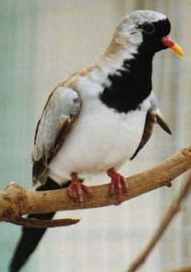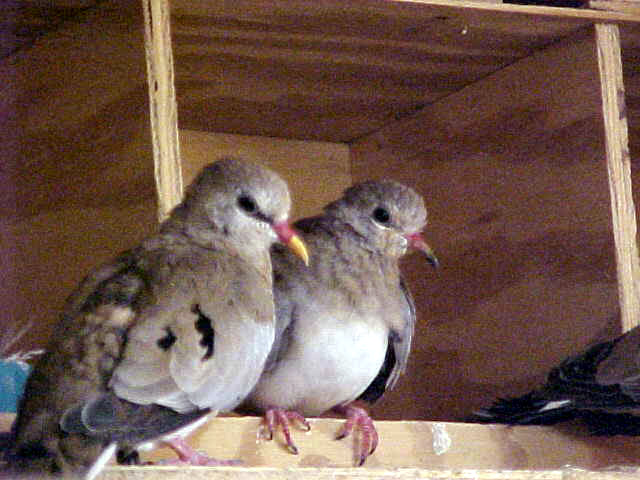
Cape Dove
Oena capensis
AKA: Namaqua Dove; Masked Dove; Long-tailed Dove


ŠJeff Downing

ŠAngel Teruel
Distribution: Inhabits the open areas such as the Acacia savanna & thornfields, prefering the sandy areas; grasslands with bushes & cultivated areas found in African; from Senegal, the southern Sahara & Red Sea, south to Cape province, Socotra Island, western & south western Arabia & Madagascar.
Two races recognized; O. c. capensis (Linnaeus 1766); O. c. aliena (Bangs 1918); very similar to nominate race, slightly smaller & more greyer looking.
Description: Length 28 cm. A dimorphic species. Male: forehead, face, throat & upper breast black, bordered by narrow greyish white; rest of head, sides of neck, sides of breast & most of the wing coverts a bluish grey. Hind neck, mantle, upper wing coverts light fawn brown or dull earth brown. Two iridescent spots on wing shields are dark blue green or purplish black. The rump is crossed with a whitish band bordered by two black bands. The upper tail coverts are brownish grey with black tips which form a bar across the base of the tail. Central tail feathers pale silver grey having variable thickness of the black tips within individuals. Eyes dark brown, orbital skin purplish grey to grey. Bill purplish red to orange red at base & orange to yellow orange at the tip. Feet & legs purplish red. Female lacks the "black cape" of the male; has a whitish grey face with a black eye stripe from the eye to the gape of the bill. Is more a brownish grey over the body where the male is grey. Juvenile has a speckled appearance, due to the black sub-terminal bands & yellowish fawn or whitish tips to the feathers.
Nesting: Clutch 2 pale cream colored eggs; incubation 13-14 days; young fledge in 12-13 days. Young may leave the nest at about 7-9 days, close observation may be required to ensure the parents feed the young. Putting the young back in the nest before nightfall is advantageous.
Note: Pulling a few feathers in the juvenile which would be in the "cape" area of the male will help identify the sex before it attains adult plumage. If the feathers grow back in "black" the youngster is a male; if the feathers grow back in brown the youngster is a female.